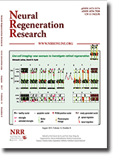
ACS Chemical Neuroscience
Scope & Guideline
Unraveling the Molecular Mysteries of Neural Function.
Introduction
Aims and Scopes
- Neurochemical Modulation and Drug Development:
A primary focus of the journal is the exploration of neurochemical pathways and the design of pharmacological agents aimed at modulating these pathways to treat neurological disorders such as Alzheimer's, Parkinson's, and depression. - Molecular Mechanisms of Neurodegeneration:
Research articles often delve into the molecular underpinnings of neurodegenerative diseases, investigating protein aggregation, oxidative stress, and neuroinflammation as key factors in disease progression. - Innovative Therapeutic Strategies:
The journal emphasizes the development of innovative strategies for neuroprotection and neuroregeneration, including the use of small molecules, peptides, and biologics to target specific pathways involved in neuronal health. - Advanced Imaging Techniques:
Articles frequently highlight advancements in imaging modalities, such as PET and MRI, which are crucial for understanding brain function and pathology at a molecular level. - Translational Research:
The journal promotes research that bridges the gap between laboratory discoveries and clinical applications, focusing on the therapeutic potential of new compounds and their mechanisms of action.
Trending and Emerging
- Neuroinflammation and Immune Modulation:
There is a marked increase in research investigating the role of neuroinflammation in various neurological disorders, along with approaches to modulate the immune response as a therapeutic strategy. - Psychedelic Compounds and Their Therapeutic Potential:
Recent papers have highlighted the exploration of psychedelics, such as psilocybin and LSD, for their potential therapeutic effects in treating mood disorders and other neuropsychiatric conditions, indicating a resurgence of interest in this area. - Artificial Intelligence and Machine Learning Applications:
The integration of AI and machine learning in drug discovery and neuroimaging is on the rise, reflecting a trend towards computational approaches that enhance the understanding of complex neurobiological systems. - Targeted Protein Degradation Technologies:
Research on targeted protein degradation, particularly in the context of neurodegenerative diseases, is gaining momentum as a novel therapeutic strategy to eliminate toxic protein aggregates. - Gut-Brain Axis Research:
There is an increasing focus on the gut-brain axis and its implications for neurodegenerative diseases and mental health, reflecting a broader understanding of the interconnectedness of physiological systems.
Declining or Waning
- Classical Neuropharmacology:
Research focusing solely on classical neuropharmacological agents, such as traditional antidepressants or anxiolytics, seems to be losing traction as the field shifts towards more complex, multimodal approaches to treatment. - Basic Neuroanatomy Studies:
Basic studies in neuroanatomy without a clear connection to functional implications or therapeutic applications are becoming less frequent, reflecting a shift towards more integrated and applied research. - Single Target Drug Development:
The trend towards developing single-target drugs appears to be waning, as there is a growing emphasis on multitarget approaches that address the multifaceted nature of neurological disorders. - In Vitro Models with Limited Relevance:
Research relying heavily on traditional in vitro models lacking translational relevance to human physiology is decreasing, as there is a greater demand for studies utilizing more sophisticated in vivo or organoid models.
Similar Journals

JOURNAL OF MOLECULAR NEUROSCIENCE
Advancing the Frontiers of Neural UnderstandingJournal of Molecular Neuroscience, published by SpringerNature, is a critical resource for researchers and professionals in the dynamic field of neuroscience. With ISSN 0895-8696 and E-ISSN 1559-1166, this journal has established itself as a key player since its inception in 1989, covering a range of topics within Cellular and Molecular Neuroscience and Medicine (miscellaneous). Its impressive rankings, including being placed in the Q2 quartile for Medicine and Q3 for Cellular and Molecular Neuroscience, underscore its scholarly impact, featuring innovative research that informs and advances our understanding of neural processes. The journal does not currently operate under an open-access model, providing rich, peer-reviewed content geared towards academics and professionals seeking comprehensive analyses and breakthroughs in molecular neurobiology. With a publication window extending to 2024, the Journal of Molecular Neuroscience remains dedicated to enhancing the scientific community's knowledge landscape, making it an essential reference for those passionate about unraveling the complexities of the nervous system.

Journal of Integrative Neuroscience
Pioneering Insights in Integrative NeuroscienceWelcome to the Journal of Integrative Neuroscience, a prominent platform dedicated to advancing the field of neuroscience by fostering interdisciplinary research and innovation. Published by IMR PRESS, this open-access journal has been committed to disseminating high-quality research since its inception in 2002, with a vision to integrate various aspects of neuroscience, from theoretical foundations to applied methodologies, ultimately enhancing our understanding of the brain and nervous system. With an evolving presence in the academic community, the journal holds significant rankings, such as Q2 in Medicine and Q3 in Neuroscience for 2023, reflecting its growing impact and value to researchers and professionals alike. The journal is accessible globally, having adopted an open-access model in 2018, ensuring that vital neuroscience findings reach a broader audience without barriers. Positioned in Singapore and serving an international readership, the Journal of Integrative Neuroscience is your essential resource for the latest insights and discoveries in a rapidly evolving field.

BRAIN RESEARCH BULLETIN
Bridging disciplines to enhance neuroscience knowledge.BRAIN RESEARCH BULLETIN is a leading academic journal published by PERGAMON-ELSEVIER SCIENCE LTD, dedicated to the dissemination of high-quality research in the interdisciplinary field of neuroscience. Since its inception in 1976, this journal has served as a vital platform for researchers, professionals, and students interested in a broad spectrum of topics within neuroscience, making significant contributions to the understanding of brain function and its associated disorders. With a commendable impact factor and a current Scopus rank of #35 out of 113 in general neuroscience, the journal holds a Q2 quartile ranking, underscoring its relevance and influence in the academic community. BRAIN RESEARCH BULLETIN invites submissions of original articles, reviews, and brief communications, enhancing scholarly communication within this dynamic field. Although the journal is not open access, it ensures widespread reach and impact through various subscription models, allowing access to pivotal findings that pave the way for future research advancements. For researchers aiming to share impactful discoveries and insights within the neuroscience community, BRAIN RESEARCH BULLETIN remains an essential outlet.

NEUROCHEMISTRY INTERNATIONAL
Elevating Knowledge in the Realm of NeurochemistryNEUROCHEMISTRY INTERNATIONAL, published by Pergamon-Elsevier Science Ltd, offers a premier platform for researchers and professionals in the realms of cell biology and cellular and molecular neuroscience. Established in 1980 and continuing its passion for advancing the field, this esteemed journal enhances scientific collaboration with a notable 2023 Q2 ranking in both relevant categories, placing it among the top-tier publications in its discipline with a Scopus rank of 23/97 for Cellular and Molecular Neuroscience. With its focus on groundbreaking research, the journal provides a wealth of vital data and insights that drive forward our understanding of neurochemistry and its implications in health and disease. While not an Open Access journal, NEUROCHEMISTRY INTERNATIONAL is integral for professionals, academics, and students aiming to stay at the forefront of neurobiological research innovations, making significant contributions to both academia and clinical applications.

TRENDS IN NEUROSCIENCES
Illuminating Pathways in Brain ResearchTRENDS IN NEUROSCIENCES, published by CELL PRESS, is a leading journal in the field of neuroscience, offering cutting-edge insights and important developments in the rapidly evolving landscape of brain research. With an impressive Impact Factor and ranking in the top quartile (Q1) of the category for Neuroscience (miscellaneous), it is positioned as a vital resource for researchers and professionals seeking to stay abreast of the latest discoveries and trends from 1978 to the present. Specifically ranked #3 out of 113 in General Neuroscience by Scopus, this journal promotes the interdisciplinary exchange of ideas and knowledge, making it an essential platform for students and experienced scholars alike. Although it is not an Open Access journal, its value lies in its rigorous peer-review process and commitment to maintaining the highest standards of academic integrity. By continuing to explore the complexities of neural processes and behavior, TRENDS IN NEUROSCIENCES plays a crucial role in shaping the future of neuroscience research and education.

Neural Regeneration Research
Advancing neural healing through innovative research.Neural Regeneration Research is a premier Open Access journal, published by Wolters Kluwer Medknow Publications, dedicated to advancing the field of Developmental Neuroscience. Since its inception, the journal has established itself as a valuable resource for researchers, professionals, and students alike, providing a comprehensive platform for disseminating the latest findings and methodologies in neural regeneration. With an impressive Scopus Ranks placement of #3 out of 49 in its category and a Q2 Quartile ranking, the journal boasts a significant impact within the academic community, reflecting its high quality and relevance. Since adopting an Open Access model in 2011, it has expanded access to critical research in neural regeneration, fostering collaboration and innovation among scholars globally. Covering various aspects of neuroscience, its converged years from 2006 to 2025 highlight the journal's commitment to ongoing discourse and discovery. Situated in China, the journal not only promotes local insights but also connects the global research community to pressing topics in neuroscience, making it an essential read for anyone involved in this dynamic field.

NEUROMOLECULAR MEDICINE
Unlocking the Secrets of the Nervous SystemNEUROMOLECULAR MEDICINE, published by HUMANA PRESS INC, is a prestigious peer-reviewed journal dedicated to advancing the fields of cellular and molecular neuroscience, molecular medicine, and neurology. With an ISSN of 1535-1084 and an E-ISSN of 1559-1174, the journal boasts a significant presence in academic research since its inception in 2002 and continues to publish cutting-edge studies through 2024. Ranked in the Q2 category for 2023 in various disciplines, including Neuroscience and Molecular Medicine, it holds impressive positions in Scopus rankings, including 41st out of 192 in Neuroscience and Neurology. Although not an open access journal, NEUROMOLECULAR MEDICINE remains invaluable for researchers, professionals, and students seeking to explore the intricate relationships between molecular mechanisms and neurological functions, thereby contributing to the scientific understanding of nervous system diseases and therapeutic innovations.

METABOLIC BRAIN DISEASE
Unraveling the complexities of brain health and disease.METABOLIC BRAIN DISEASE, published by SPRINGER/PLENUM PUBLISHERS, is a leading journal dedicated to advancing our understanding of the metabolic processes impacting brain health and disease. Established in 1986 and set to continue until 2024, this journal encompasses a wide range of interdisciplinary research that intersects the fields of Biochemistry, Cellular and Molecular Neuroscience, and Neurology, as evidenced by its notable quartile placements in Q2 and Q3 for 2023. With an ISSN of 0885-7490 and an E-ISSN of 1573-7365, it serves as a vital resource for researchers and practitioners aiming to deepen their insights into cerebral metabolic disorders and their implications. Although currently not an Open Access option, its rigorous peer-review process ensures that high-quality, impactful research reaches its audience. Showcasing a significant rank within the top percentile of its categories, METABOLIC BRAIN DISEASE is instrumental in shaping the future of neurological research and clinical applications.

MOLECULAR NEUROBIOLOGY
Illuminating Pathways in Neurobiology ResearchWelcome to Molecular Neurobiology, the premier journal dedicated to the exploration of the molecular mechanisms underlying nervous system function and pathophysiology. Published by Springer, this journal provides an essential platform for disseminating high-quality research in the rapidly evolving fields of Cellular and Molecular Neuroscience and Neurology, boasting an impressive impact factor that reflects its esteemed position within the academic community. With its ranking in the Q1 and Q2 quartiles for various neuroscience categories, Molecular Neurobiology stands at the forefront of groundbreaking discoveries, showcasing innovative studies that bridge basic science and clinical application. Researchers and professionals are invited to contribute to its rich portfolio, which spans from fundamental insights into cellular processes to advanced therapeutic strategies. Although Molecular Neurobiology does not operate as an Open Access journal, its influential body of work remains accessible through institutional and personal subscriptions. As we converge from 1987 to 2024, we continue to aim for excellence, seeking to catalyze progress in understanding neurological diseases and enhance the scientific dialogue within the neuroscience community.

Neurochemical Journal
Innovating Understanding of Neurochemical ProcessesNeurochemical Journal, published by MAIK NAUKA/INTERPERIODICA/SPRINGER, focuses on the dynamic and rapidly evolving field of neurochemistry, providing insights into cellular and molecular neuroscience. Despite the discontinuation of its coverage in Scopus, the journal remains a valuable resource for researchers and professionals seeking to explore the biochemical underpinnings of neural function and pathophysiology. With an ISSN of 1819-7124 and an E-ISSN of 1819-7132, the journal aims to publish rigorous research articles, reviews, and notes that push the boundaries of our understanding of neurochemical processes. With a ranking that places its subjects in the lower quartile of their respective fields, Neurochemical Journal offers a platform for innovative studies and discussions among up-and-coming scientists, making it a crucial outlet for advancing the discourse in this critical area of biomedical research.